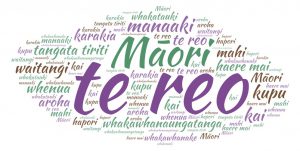Te Reo resources
Te Reo Resources
Here are some useful resources, created for us, that we’d like to share with you. There are PDFs with karakia, waiata and whakatauki you can use. There are also accompanying sound files for these. Please feel free to use and share them.
We’ve also listed some websites and apps we think are great for learning Te Reo.
Downloadable PDFs
Sound files
Karakia
1. Mauri oho – Karakia timatanga
2. Whiti ora – Karakia timatanga
3. Whakataka te Hau – Karakia timatanga
4. Tukua te wairua kia rere – Karakia timatanga
5. Kia tau ngā manaakitanga – Karakia timatanga or whakamutunga
6. Unuhia – Karakia whakamutunga
7. Kia tau – Karakia whakamutunga
8. Whakapaingia ēnei kai – Karakia mō te kai
9. Kua horahia te kai – Karakia mō te kai
10. Nau mai e ngā hua – Karakia mō te kai
Whakatauki
Celebrating leadership
1. He kotuku rerenga tahi
Celebrating hard work
1. He rā whatiwhati kō
2. Tē tōia, tē haumatia
3. He Manawa tītī
4. Mauri tū, mauri ora
5. Kua hua te marama
How to add a Māori keyboard
See how to add a Māori keyboard and integrate it into Word with English here.
Useful websites and apps
Kupu
With the Kupu app, users simply take a picture. Kupu then uses image recognition to identify what the object is in the picture and provide Te Reo Māori translations for the object(s). Fun and easy to use!
Download here for iPhone users and here for Android users.
Pepeha
Pepeha is a way of introducing yourself in Māori. It tells people who you are by sharing your connections with the people and places that are important to you. Once you have completed your Pepeha you can save it to your device, have it printed for display or as a taonga for yourself or a loved one.
Our engagement with Te Tiriti o Waitangi
Nā tō rourou, nā taku rourou ka ora ai te iwi
With your basket and my basket we will sustain the people
Inspiring Communities is committed to a Treaty honouring Aotearoa where people actively participate in shaping their communities. Te Tiriti o Waitangi is a foundation for sharing power between tāngata whenua and tāngata Tiriti (all others who have come here) to sustain just and vibrant communities.
We champion ‘place’ within the context of Aotearoa and recognise te tino rangatiratanga of hapū as expressed in
He Whakaputanga o te Rangatiratanga o Nu Tireni (the 1835 Declaration of Independence) and affirmed in Te Tiriti o Waitangi. Self-determined processes for whānau/hapū /iwi are at the heart of flourishing wider communities.
As a small, tāngata Tiriti organisation with a national focus, our intentions are aspirational and realistic. Our Treaty commitment is reflected conceptually, structurally and practically. We do this in the following ways:
Conceptually – the framing of ideas which inform our work
We develop CLD theory that is contextualised to Aotearoa and reflects the centrality of tāngata whenua to ‘place.’ We do this through applying a Treaty lens (see below) to our core conceptual work. We acknowledge our position as tāngata Tiriti and engage with Te Ao Māori to shape our work.
Structurally – Māori decision-making power and influence on our work
We are intentional in seeking input and involvement from Māori at strategic and operational levels. As an enabler at the local community level, we actively promote and support positive engagement with whānau/hapū/iwi. Work with tāngata whenua is built on recognition of self-determination.
Practically – the work we undertake and our ways of working
Our work strengthens the capacity of communities to contribute to a Treaty honouring Aotearoa. We are developing our internal capability to work effectively with tāngata whenua.
Applying a Treaty lens
We understand the commitments made in Te Tiriti o Waitangi as being critical to the context of CLD in Aotearoa. Therefore, we apply a Treaty lens to our CLD work. The following questions guide us in this:
- What does the concept/initiative/project look like using a Treaty lens?
- Who is shaping this work and what perspectives does it reflect?
- How is this work grounded in an understanding of tāngata whenua relationships to place?
- How does this work affirm and support te tino rangatiratanga?
Here is a tool for working with Tangata Whenua.
Here are some useful Te Reo resources.



